Losing a tooth can be an incredibly distressing experience, affecting not only your smile but also your confidence and ability to chew properly. Fortunately, advancements in dental technology have brought us reliable solutions like dental implants, which offer a natural-looking and long-lasting alternative to traditional dentures or bridges. Among these advancements is the technique of immediate loading, which allows for the placement of a temporary crown or bridge immediately after implant placement.
This innovative approach eliminates the need for a lengthy healing period, enabling patients to enjoy their restored smile sooner. In this guide, we will explore the world of dental care understanding immediate loading, examining its benefits, potential risks, suitability, and more. By the end of this comprehensive overview, you will have a clear understanding of whether this advanced technique is the right choice for your dental restoration needs.
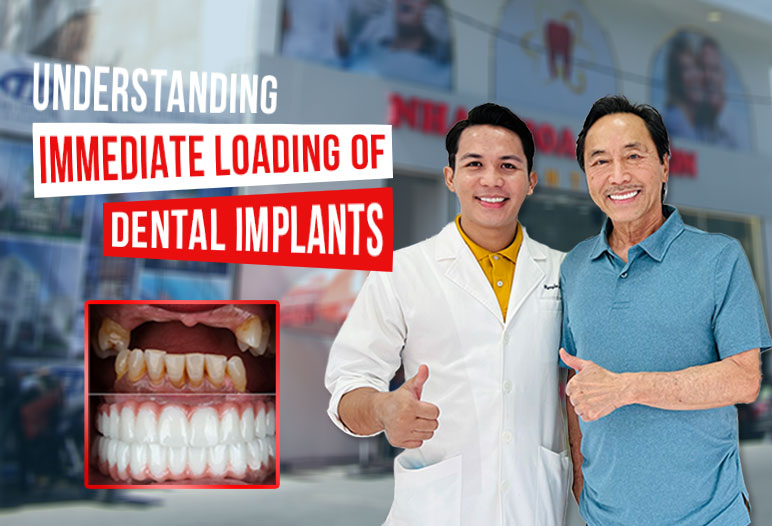
What is immediate loading of dental implants?
Immediate loading of dental implants refers to a technique that allows dentists to place a temporary restoration onto a newly inserted dental implant during the same appointment. This contrasts with traditional implant procedures, which typically require a two-stage approach. With traditional methods, a surgical procedure is performed to insert the implant into the jawbone, followed by a waiting period of several months for the implant to integrate with the bone before a second procedure is conducted to attach the final restoration.
The essence of immediate loading lies in its ability to combine the initial surgical procedure and restoration placement into one single visit. This results in a more streamlined process for patients who wish to minimize the amount of time spent without their teeth. While immediate loading offers various advantages, it comes with some considerations regarding candidacy and outcomes.
Defining Immediate Loading
Immediate loading can be defined as the placement of a provisional restoration directly on the dental implant immediately following its insertion. The goal of this method is to provide an immediate aesthetic and functional solution for patients experiencing tooth loss. The temporary restoration allows individuals to eat, speak, and smile confidently while the implant undergoes osseointegration—a biological process where the implant integrates with the surrounding bone.
The procedure requires careful planning and assessment by the dentist to ensure the appropriate conditions are present for successful immediate loading. Factors such as bone quality, implant stability, and overall oral health play crucial roles in determining if a patient is a suitable candidate for this technique.
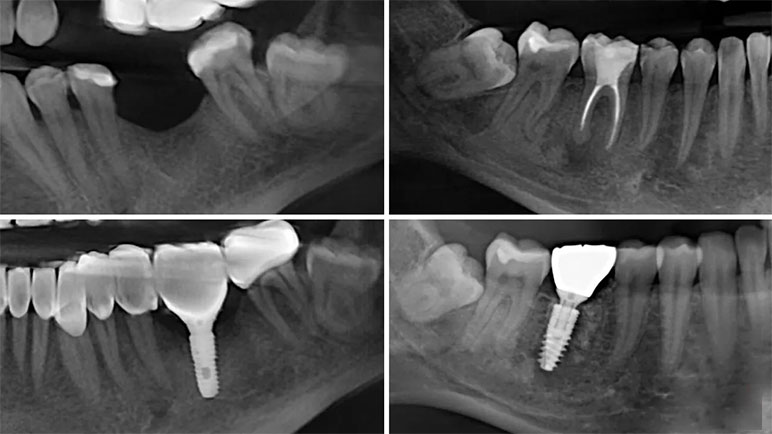
Importance of Biomaterials
The success of immediate loading largely relies on the use of advanced biomaterials in modern dentistry. Dental implants are typically made from titanium, a biocompatible material known for its strength and ability to bond effectively with bone tissue. This interaction between the implant and bone is vital for achieving a stable foundation for immediate loading.
With advancements in dental technology, the introduction of surface treatments on implant materials has enhanced osseointegration rates and reduced healing times significantly. These improvements enable dentists to provide patients with a highly effective solution for restoring their smiles with minimal wait time.
Candidate Selection Criteria
Not every patient is a suitable candidate for immediate loading; specific criteria must be met to ensure positive outcomes. Dentists assess factors such as the patient’s overall oral health, the condition of the remaining bone structure, and the presence of any underlying medical conditions that could affect healing.
By thoroughly evaluating these elements, dental professionals can determine if immediate loading is the appropriate option for the individual patient. This assessment emphasizes the importance of a personalized treatment plan tailored to meet the unique needs of each person seeking dental care.
What are the benefits of immediate loading implants?
Immediate loading implants come with a plethora of benefits that cater to the needs and desires of patients. The most prominent advantage is undoubtedly the accelerated timeline for achieving a complete smile restoration. However, there are several other significant benefits worth exploring.
Faster Restoration Process
One of the standout advantages of immediate loading is the significantly shortened treatment time. Traditional dental implant procedures often involve waiting for several months before the restoration can be placed. Patients seeking immediate loading can leave the dental office within hours with a functional tooth or teeth.
This rapid turnaround can drastically improve the quality of life for individuals suffering from tooth loss. They can regain their confidence and functionality without enduring a prolonged period of inconvenience. Additionally, this swift process can reduce anxiety for those apprehensive about undergoing multiple surgical procedures.
Improved Aesthetics and Confidence
Another compelling benefit of immediate loading is the aesthetic enhancement it provides. For many patients, the appearance of their smile is paramount. By placing a temporary crown immediately after implant placement, the contours of the jawline are preserved, preventing bone resorption that may occur during the healing process.
As a result, patients can enjoy an aesthetically pleasing outcome right from the beginning, which can positively impact their self-esteem and social interactions. The immediate sense of normalcy and beauty that comes from having a tooth restored is invaluable, helping individuals to feel good about themselves both personally and professionally.
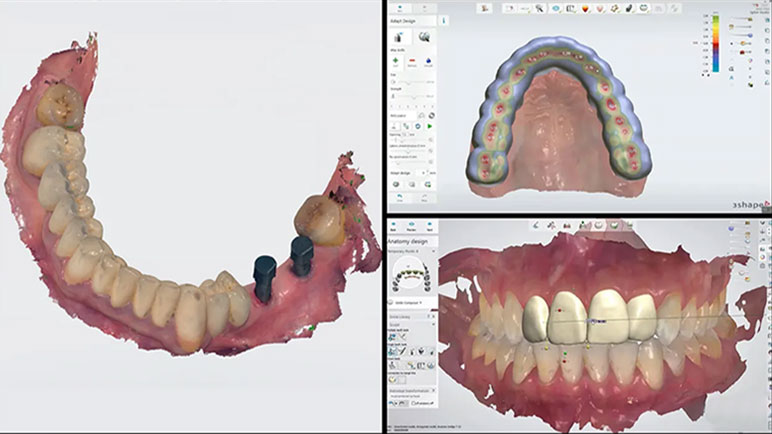
Reduced Risk of Bone Loss
The mechanics behind immediate loading support healthy bone growth around the implant. When an implant is loaded with a temporary restoration right away, it stimulates the surrounding bone tissue, encouraging osseointegration. This proactive approach helps mitigate the risk of bone loss associated with traditional methods, where waiting periods often result in decreased bone density in the affected area.
Maintaining strong and healthy bone structures is essential for ensuring the longevity of dental implants. The immediate loading technique empowers dental professionals to create favorable conditions for optimal healing and integration.
Enhanced Comfort and Convenience
Immediate loading minimizes the discomfort associated with wearing temporary dentures or bridges during the waiting period. Many patients find temporary restorations uncomfortable and bothersome, leading to difficulties in eating and speaking.
By opting for immediate loading, patients avoid the hassle of dealing with removable appliances altogether. Instead, they receive a permanent solution in a single appointment, making the entire experience more comfortable and convenient.
Are there any risks associated with immediate loading?
While immediate loading implants boast numerous benefits, it is imperative to acknowledge and understand the potential risks involved. Dentistry is an intricate field, and every procedure carries some degree of risk. Immediate loading is no exception.
Implant Failure
One of the most concerning risks associated with immediate loading is the possibility of implant failure. When an implant is subjected to immediate loading, it experiences forces that can jeopardize the healing process if the surrounding bone density is insufficient. If the implant does not successfully integrate with the bone, it may fail, necessitating further interventions.
To mitigate this risk, dental care evaluate candidates based on their bone density and overall oral health before proceeding with immediate loading. Strong bone support is essential for the success of this technique, and inadequate bone may lead to complications.
Infection Concerns
As with any surgical procedure, the risk of infection is a genuine concern when considering immediate loading implants. The mouth contains a vast array of bacteria, and the immediate placement of a restoration can introduce additional challenges.
To reduce the likelihood of infection, dentists employ stringent hygiene practices during the procedure and provide patients with post-operative dental care instructions. Patients must also commit to proper oral hygiene routines to prevent infection around the implant site.
Peri-implantitis Risks
Peri-implantitis refers to inflammation and infection of the gum tissue surrounding an implant. It is a serious condition that can lead to bone loss and compromise the longevity of the implant. Individuals opting for immediate loading must be especially vigilant in maintaining good oral hygiene to avoid peri-implantitis.
Regular visits to the dentist for cleanings and check-ups are vital in monitoring the health of the implant and surrounding tissues. Educating patients about the signs and symptoms of infection can empower them to seek timely intervention if issues arise.
Aesthetic Compromises
Although immediate loading aims to enhance aesthetics, there may be instances where the temporary crown does not perfectly match the shade or shape of the patient’s natural teeth. Such variations can cause dissatisfaction among patients who place a high value on the visual aspects of their dental restoration.
Dental professionals often address these concerns through adjustments and refinements, but it’s essential for patients to manage their expectations throughout the process. Open communication with the dentist regarding aesthetic goals can foster better outcomes and increased satisfaction.
How long does the healing process take after immediate loading?
Understanding the healing process is critical for anyone considering immediate loading implants. While this technique offers rapid restoration timelines, the healing phase is still a vital component of the overall success of the procedure.
Osseointegration Timeline
The healing process after immediate loading begins with osseointegration—the biological bonding of the implant to the jawbone. This process typically takes between three to six months, depending on various factors such as the patient’s bone density, lifestyle, and adherence to post-operative dental care.
During this time, the implant becomes firmly anchored in the jaw, allowing it to withstand the forces of chewing and biting. Although the temporary crown provides functional relief immediately, the long-term stability of the implant relies on this crucial integration phase.
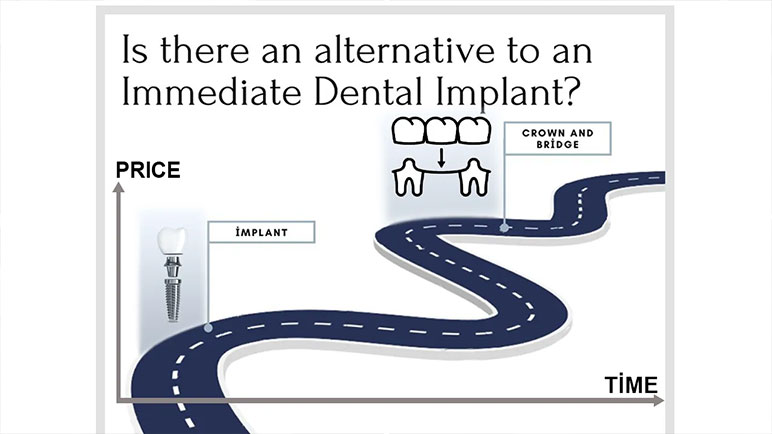
Temporary Crown Usage Guidelines
After immediate loading, patients are provided with guidelines for using their temporary crown. While it is designed to function like a natural tooth, there may be restrictions on food choices and activities to ensure the stability of the implant.
Patients are usually advised to avoid hard or sticky foods that could put excessive pressure on the temporary crown. Following these recommendations is crucial for maintaining the integrity of the restoration until the final crown can be placed.
Post-operative Monitoring
Regular follow-up appointments with the dentist are essential during the healing process. These visits allow dental professionals to monitor the implant’s progress and ensure that osseointegration is occurring as expected.
Any signs of complications, such as discomfort or swelling, should be communicated to the dentist promptly. Early detection and intervention can prevent more severe issues, contributing to the successful healing of the immediate loading implant.
How long do dental care immediate loading implants last?
When considering immediate loading implants, potential patients often ponder the longevity of their investment. With proper dental care, immediate loading implants can last for many years, often surpassing a lifetime in terms of functionality and aesthetic appeal.
Factors Influencing Longevity
Several factors influence the longevity of immediate loading implants, including bone density, oral hygiene, patient compliance, and lifestyle choices. Each of these elements plays a role in determining how well the implant integrates with the jawbone and remains functional over time.
Bone density is paramount; patients with strong bone structures tend to experience better outcomes. Those who maintain diligent oral hygiene habits—such as regular brushing, flossing, and dental visits—are more likely to enjoy long-lasting implants. Compliance with post-operative instructions and attending routine check-ups further contribute to the overall success and lifespan of the implant.
Importance of Oral Hygiene
Oral hygiene is a cornerstone of dental care that extends beyond natural teeth to include implants. Proper oral hygiene practices help prevent complications such as peri-implantitis, which can jeopardize the longevity of the implant.
Patients with immediate loading implants should prioritize daily brushing and flossing, along with using antimicrobial mouthwashes as recommended by their dentist. Regular dental cleanings and professional evaluations ensure that any potential issues are addressed before they escalate.
Lifestyle Considerations
Lifestyle factors, including smoking or excessive alcohol consumption, can adversely affect the success and longevity of dental implants. Smoking, in particular, is associated with higher rates of implant failure and complications due to its negative impact on blood flow and healing.
By adopting healthier lifestyle choices, patients can significantly enhance the odds of their immediate loading implants lasting for a lifetime. Encouraging habits such as balanced nutrition, regular exercise, and stress management can contribute to stronger oral health outcomes.
Are dental care immediate loading implants more expensive than traditional implants?
When deliberating over dental restoration options, cost considerations frequently arise. Immediate loading implants can sometimes be more expensive than traditional implants, primarily due to the complexity of the procedure and the advanced materials utilized.
Understanding Cost Variations
The pricing associated with immediate loading implants is influenced by several factors, including the type of materials used, the skill level of the dental professional, and the intricacies of the procedure itself. High-quality biomaterials and state-of-the-art technology often drive up costs, but they are integral to achieving optimal outcomes.
While the upfront cost may appear higher, it is essential to consider the overall value offered by immediate loading. The convenience of fewer appointments and the rapid restoration timeline may ultimately justify the financial investment for many patients.
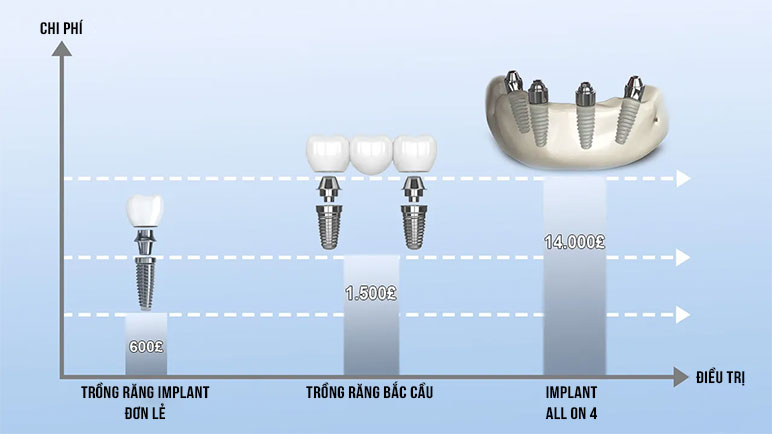
Balancing Costs and Benefits
Navigating the decision between immediate loading and traditional implants involves weighing the associated benefits against the costs. For patients who prioritize time efficiency and convenience, immediate loading may prove to be a worthwhile investment.
Moreover, patients seeking improved aesthetics and comfort may find solace in knowing that immediate loading can provide a more seamless and enjoyable experience in restoring their smiles. Effective communication with the dentist about the potential costs and benefits can help patients make informed decisions that align with their goals.
Insurance Considerations
Insurance coverage for dental implants varies widely and often depends on the specifics of the insurance plan. Some policies may cover portions of the cost for traditional implants while excluding or limiting coverage for immediate loading procedures.
Patients should proactively consult with their insurance providers to understand what is covered and explore financing options if needed. Transparent discussions with their dental team can aid in navigating the financial aspects of their dental care journey.
Is dental care immediate loading suitable for everyone?
Despite the advantages of immediate loading implants, it is crucial to recognize that this technique is not universally suitable for all patients. Various factors must be taken into account to determine candidacy for immediate loading.
Evaluating Bone Density
Bone density is a primary factor influencing eligibility for immediate loading implants. Patients with sufficient bone structure offer a more stable environment for implant placement, ensuring the success of immediate loading.
For individuals with compromised bone density, dental professionals may recommend preliminary treatments such as bone grafting or sinus lifts to enhance bone volume before attempting immediate loading. This strategic planning optimizes the chances of successful integration and long-term outcomes.
Considering Medical History
A thorough review of the patient’s medical history is essential in assessing candidacy for immediate loading. Certain medical conditions—such as uncontrolled diabetes, autoimmune disorders, or a history of radiation therapy—can impede healing and increase the risk of complications.
In such cases, dentists will evaluate whether immediate loading is feasible or if alternative options would better suit the patient’s health profile. Communication between patients and providers is paramount to developing a comprehensive treatment plan that accounts for individual circumstances.
Assessing Oral Hygiene Practices
Good oral hygiene is indispensable for the success of any dental procedure, particularly immediate loading. Patients with poor oral hygiene practices may be at higher risk for complications, such as infections or peri-implantitis.
Before proceeding with immediate loading, dentists will assess the patient’s commitment to maintaining excellent oral hygiene. Educational resources and personalized dental care plans can help patients understand the importance of their active role in preserving the success of their dental implants.
Immediate loading dental implants in Ho Chi Minh City: The perfect solution to restore missing teeth and help you smile confidently. With over 10 years of experience, Saigon Dental Implants Center is proud to be a pioneer, best dental clinic in Vietnam. Our team of experienced dentists, state-of-the-art equipment, and exclusive implant technology are committed to providing you with strong, durable teeth. Contact us now for a free consultation and experience our high-quality dental implant services!
Conclusion
Immediate loading represents a revolutionary advancement in dental implant techniques, offering a faster recovery time alongside improved aesthetics. However, it is essential to recognize that this technique is not suitable for everyone, and candidacy assessments are crucial in determining its viability for each individual.
By understanding the risks and benefits associated with immediate loading, patients can make informed decisions about their dental restoration journey. Collaborating closely with dental professionals and prioritizing oral hygiene practices will maximize the effectiveness of immediate loading implants and contribute to achieving long-term success.
If you are contemplating dental implants, consider discussing the option of immediate loading with your dentist. Their expertise can help clarify whether this innovative approach aligns with your specific needs and goals. With thoughtful planning and appropriate care, immediate loading can pave the way for a healthy, beautiful, and confident smile.

 Google Reviews
Google Reviews Call
Call
SAIGON IMPLANT CENTER
Best dentist in Vietnam
Saigon Implant Center - Dental Clinic utilizes the latest technology for specialized treatment in the field of Single implant, full jaw implants, All on 4 implants, All on 6 implants, Zygoma implant....
SAIGON IMPLANT CENTER
Best dentist in Vietnam
Saigon Implant Center - Dental Clinic utilizes the latest technology for specialized treatment in the field of Single implant, full jaw implants, All on 4 implants, All on 6 implants, Zygoma implant....